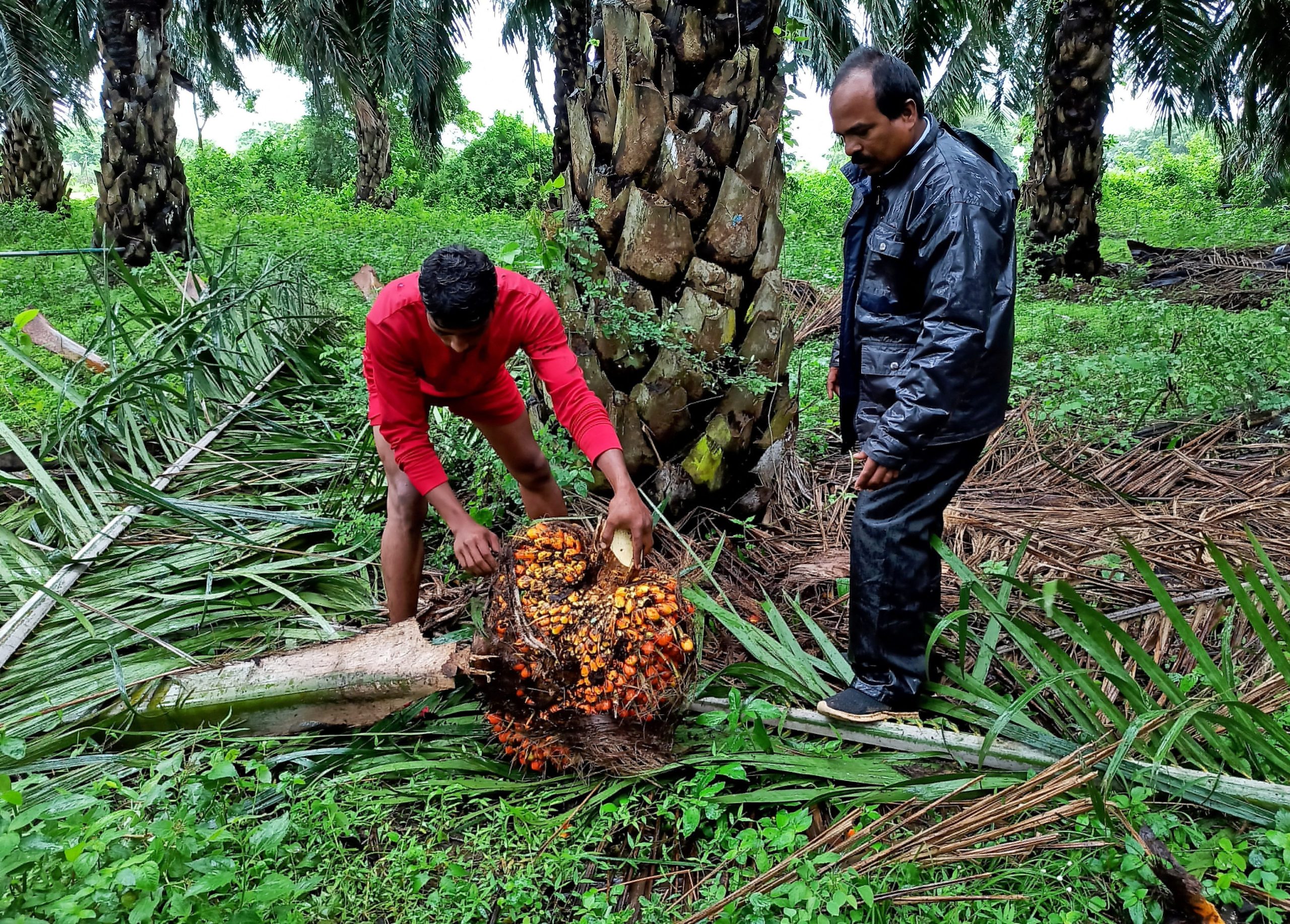
Pullarao Daravathu and thousands of fellow farmers from Telangana in southern India are busy planting oil palms because their origin state aims to add more areas under controversial plants in four years than all countries owned in several decades.
Telangana targets 2 million additional hectares under palm oil cultivation in the next four years, and will try hard to achieve this goal – from building large dams and irrigation channels to importing millions of germinated sprouts.
The generous government subsidy and the potential for bumper’s profit compared to other plants also encourage farmers such as Daravathu to switch to the palm of the oil.
“The palm of the hand gives more than 200,000 Indian rupees ($ 2,536) per hectare back to farmers who plant plants a few years ago. In rice, I struggle to get 40,000 rupees even after making many efforts,” said Daravathu, who used to plant oil palm In 5 hectares of agriculture in Sathupally, almost 300 km (186 miles) to the east of Hyderabad, the capital of the state.
New Reli -This is the price of palm oil oil has more than double the price of fresh fruit bunches, which are sold by farmers to the oil factory.
Over the years, price volatility, water scarcity and pregnancy period of nearly four years are limited to oil palm plantations in India up to less than 1 million hectares, most of the coast of Andhra Pradesh, the state that Telangana was carved in 2014.
But Telangana, which occupies the interior in the Deccan highlands, now wants to appear as the center of India’s main palm oil, with a target area that will place the country as the fifth largest palm oil farmer globally – from the base that can be ignored at this time.
Drive can reduce the import of Indian giant vegetable oil, which cost a record fee of $ 18.9 billion a year ago and expands the national trade deficit.
India filled two -thirds of the demand for vegetable oil through imports of around 14 million tons per year, including around 8.5 million tons of palm oil.
The federal government wants to increase the output of palm oil to cut the expensive imports, which lifted inflation this year to the highest multi-year after the top supplier of Indonesia suddenly stopped exports.
“In the next four years, most coconut planting will be carried out, and after 7-8 years Telangana can produce 4 million tons of palm oil,” L Venkatram Reddy, Director of Horticulture in the state government to Reuters.
India currently produces less than 300,000 tons of palm oil and depends on imports from Indonesia, Malaysia and Thailand to meet its requirements.
Even if Telangana succeeded in planting oil palm only in 1 million hectares and produced 2 million tons of palm oil, it would be a big achievement, said Chava Venkateswara Rao from Godrej Agrovet Ltd, the largest palm oil producer in the country.
Until last year, this country added around 35,000 hectares under oil palm every year.
Some areas in Telangana have enough water for the palm of the hungry oil thanks to rivers -river such as Godavari, Krishna and Bhima. But many bags do not have enough water to meet the needs of oil palm up to 265 liters per tree per day.
To overcome this, the state has built a large elevator irrigation project and a channel network that now allows farmers to plant oil palms in most states.
“We used to face the scarcity of water in the summer. Now, with the Kaleshwaram elevator irrigation project, we have enough water for oil palm,” said Bolampalli Farmer Venkateshwar Rao, who planted oil palms over 12 hectares.
The Kaleshwaram irrigation project, which is almost complete, cost 1.15 trillion rupees ($ 14.44 billion).
The authorities give permission to process coconut oil only after farmers install a micro irrigation system that eats water, said Reddy, adding “the subsidy of the central government and the state covers almost all drops of the irrigation system.”
Shift to oil palm from rice and other plants can help the country to reduce the annual rice procurement of around 2.5 million tons, and cut electricity bills for an elevator irrigation project by 15 billion rupees because the palms of the oil drops require less water than the water paddy, the word Reddy.
Ravi Mathur, who heads the Institute of Oil Palm Research India (IIOPR), a body supported by the government pioneering oil palm push, said the elevator irrigation project has made palm oil planting feasible in areas that were previously not suitable for plants due to water scarcity.
Scarcity of planting material
While thousands of farmers want to switch to oil palm, the availability of limited seeds, and preparing it is a long process that takes almost a year.
Companies operating in Telangana imported 12.5 million sprouts last year and made seeds for around 200,000 hectares this year, said an official with TS Oilfed managed by the government, the largest sprouts importer in the country
This state aims to import 15 million sprouts this year – especially sourced from Indonesia, Malaysia, Thailand and Costa Rika – and 50 million next year to reach the target, he said.
“Suddenly there was a surge in demand after a general meeting with palm oil prices. The company could not supply as much as we needed this year,” said Sougata Niyogi, a high -ranking official at Godrej Agrovet. “The supply situation will be more comfortable next year.”








